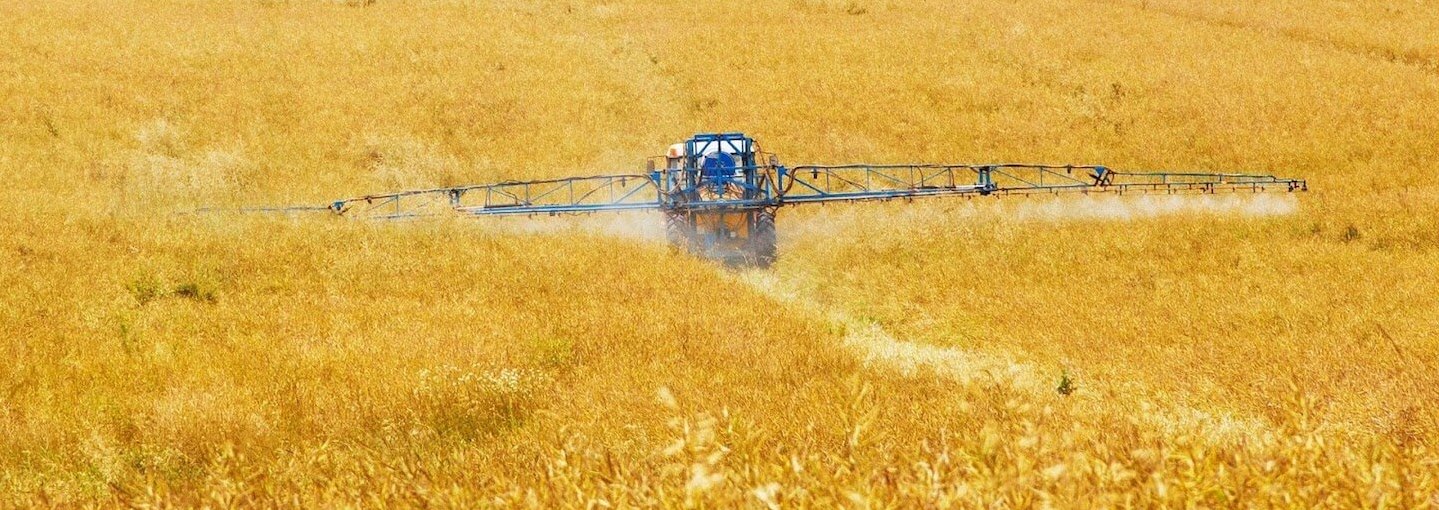Why Ban Glyphosate
The herbicide active ingredient glyphosate and its formulations are the most widely used herbicides, both globally and in the EU. It was first sold to farmers in 1974 by Monsanto, which has recently been acquired by Bayer. It is now manufactured and sold by many companies in hundreds of products, such as Roundup-branded herbicides.
Glyphosate is the most widely used pesticide in the world, which is of concern since its negative impacts on human health and the environment are well-documented.
1. Threats to the environment
Glyphosate’s impacts on the environment have been scientifically illustrated in multiple occurrences. Firstly, it was linked to chronic toxicity in aquatic species by the Risk Assessment Committee of the European Chemicals Agency (ECHA). Glyphosate is indeed classified as being toxic to aquatic life with long-lasting effects, some aquatic species, such as amphibians can be more sensitive to glyphosate and glyphosate products.
Secondly, the European Food Safety Authority (EFSA) identified risks to wild non-target terrestrial vertebrates following exposure to glyphosate-product (representative formulation).
Thirdly, independent science exposed that glyphosate and GBH products negatively affect the behaviors, growth, development, metabolic processes, and immune deafens of different bee species. A 2021 meta-analytical review, stated that most bee species, including wild and solitary bee species, suffer significantly from negative effects when exposed to glyphosate.
2: Threats to human health
Glyphosate has been linked to cancer and genotoxicity in humans by the International Agency for Research on Cancer (IARC) of the World Health Organization (WHO) and recently by the French Institute INSERM. But despite this growing mountain of existing science, a report from the Health and Environment Alliance (HEAL) published in June 2022 shows the scientific evidence proving that glyphosate is carcinogenic has so far been dismissed in the EU scientific assessment. This report closely examined the 11 rats and mice studies provided by pesticide companies in 2019 as part of the application dossier. In 10 out of 11 studies, tumors were observed with a link to glyphosate treatment. Additionally, the public scientific literature also links glyphosate exposure to serious diseases. In addition to its carcinogenicity potential, recent studies show that glyphosate and products that contain glyphosate can be neurotoxic and may contribute to the development of Parkinson’s disease, may cause kidney disease and disrupt the human and animal microbiome. Maternal exposure to glyphosate has also been linked to spontaneous deliveries with shortened gestational length and abnormal development of reproductive organs in newborns.
3: Alternatives to glyphosate exist
The use of herbicides, including glyphosate, can be significantly reduced or even eliminated in conventional agriculture. Numerous non-chemical weed management methods are already available. These non-chemical alternatives include crop rotation, intercropping, weed management by livestock, mulching, robotic weeders, and electrothermal weeders. These alternatives offer both low and high-tech options that offer different advantages to farmers. However, it is vital to integrate various methods into non-chemical weed management because one method is rarely enough to manage all weeds at all times in all crops. Indeed, even with herbicide-based weed management, a range of different types of herbicide modes of action are required to achieve sufficient weed management across the whole farm.

